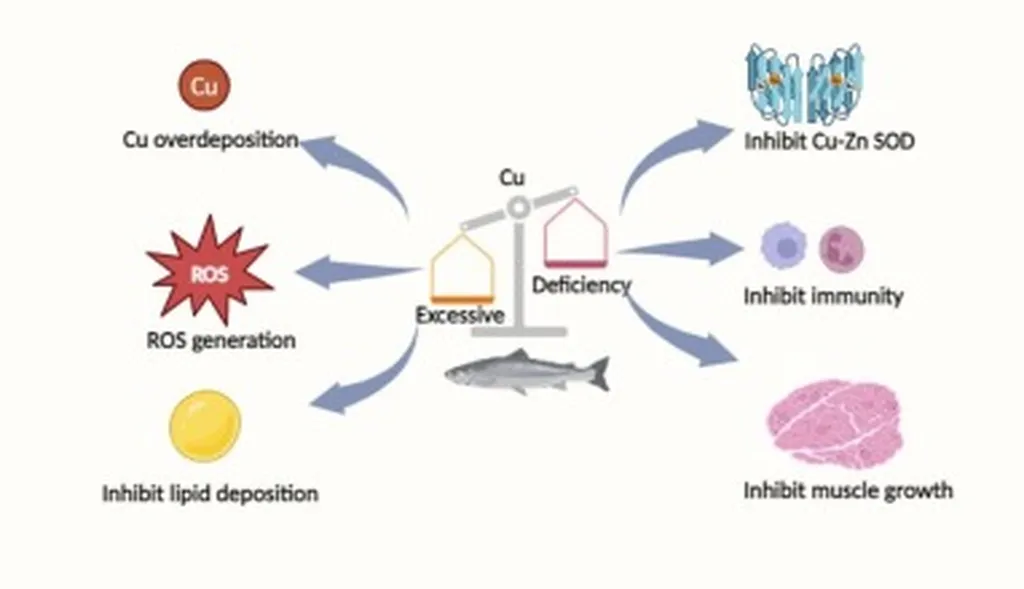In the world of aquaculture, the quest for improving fish muscle quality is a perpetual challenge. A recent study published in *Food Chemistry: Molecular Sciences* (translated from its original Chinese title) has shed new light on the role of copper in enhancing collagen deposition in grass carp (Ctenopharyngodon idellus), offering promising insights for the industry. Led by Yijing Lin from the Ocean University of China, the research delves into the intricate mechanisms of collagen metabolism and its regulation by copper ions (Cu2+).
Collagen, a crucial component of fish muscle, plays a pivotal role in determining the quality of the flesh. Timp2, a key enzyme in collagen metabolism, has been the focus of this study. The researchers hypothesized that Cu2+ could up-regulate timp2 expression through the TGFβ/Smads signaling pathway, thereby modulating collagen content in grass carp.
To validate this hypothesis, the team conducted experiments using cultured fibroblasts, treating them with the TGF-β/Smads inhibitor SB431542 and timp2-specific siRNA (sitimp2). The results were striking. Both sitimp2 and SB431542 treatment decreased collagen content, down-regulated timp2 expression, and up-regulated mmp2 expression. Conversely, Cu2+ supplementation significantly increased collagen content, up-regulated timp2 expression, and enhanced TGFβ/Smads signaling pathway activity, while simultaneously suppressing mmp2 expression.
“The results confirmed our hypothesis that Cu2+ enhanced collagen deposition through TGFβ/Smads-mediated up-regulation of timp2,” said Yijing Lin, the lead author of the study. This finding is a significant step forward in understanding the role of copper in collagen regulation.
The implications of this research are far-reaching. As Yijing Lin explained, “Dietary copper supplementation could be a practical nutritional strategy to improve muscle texture and product quality in farmed grass carp.” This could revolutionize the aquaculture industry, leading to better quality fish products and potentially higher market values.
Moreover, the study provides novel mechanistic insights into copper-dependent collagen regulation. This could pave the way for further research into the nutritional regulation of muscle quality in other fish species, and even in terrestrial animals.
In the broader context, this research highlights the importance of micronutrients in animal nutrition and their potential to enhance product quality. As the global demand for high-quality protein continues to rise, understanding these mechanisms becomes increasingly crucial.
The study, published in *Food Chemistry: Molecular Sciences*, offers a glimpse into the future of aquaculture, where nutritional strategies could play a key role in meeting the growing demand for high-quality fish products. The findings not only advance our scientific understanding but also open up new possibilities for the industry, promising a future where quality and sustainability go hand in hand.

